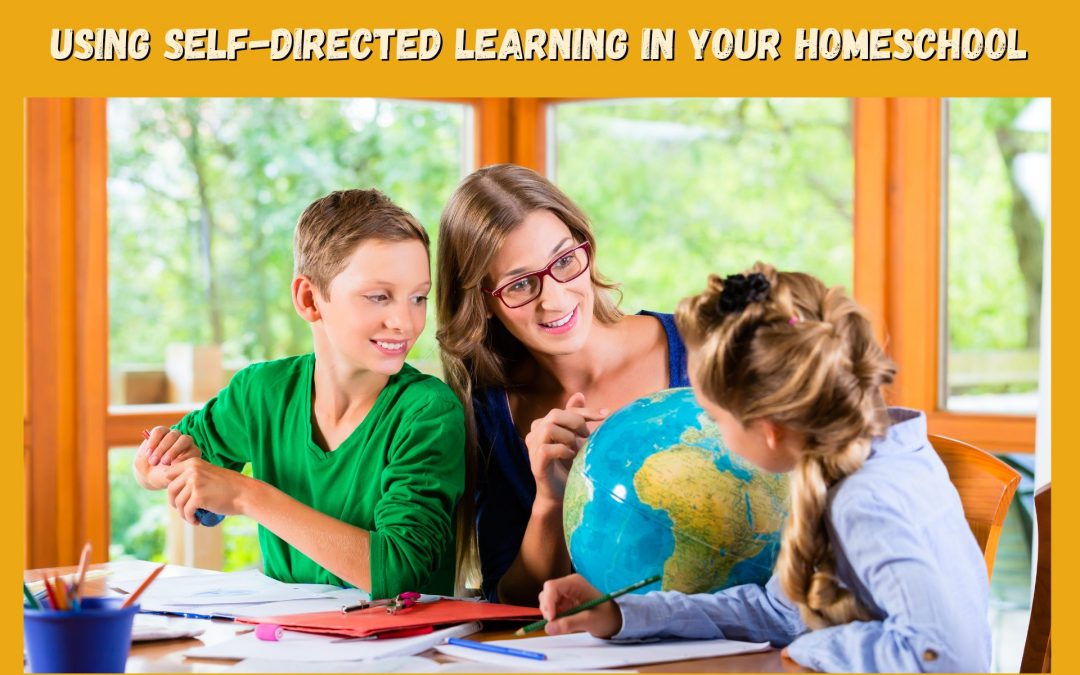TAKE A STEP BACK
As a homeschool parent, have you grown frustrated with trying to be a teacher when it’s not a job you feel you’re qualified to take? Perhaps you should take a step back and look at the possibility of changing your direction and stop trying to be a “real” teacher! What if you could take on the reduced-anxiety role of becoming a facilitator and move the classroom emphasis from you as a teacher towards your student learner? Perhaps it’s time to consider a self-directed learning model where you become the mentor/facilitator and your student basically creates their own ideas and participates in developing their own curriculum?
WHAT IS SELF-DIRECTED LEARNING (SDL)?
Self-directed earning, or SDL, is an educational process that gives power to the student to choose how they want to learn. Students receive guidance from a teacher, whether that teacher is in a school setting or online. Teachers may also be tutors or parents who are homeschooling their kids. Once a student is given their educational goal or target, they have freedom to choose how they achieve it. (https://www.uopeople.edu/blog/self-directed-learning-beneficial/)
Commentary writer Michele Collett wrote on February 22, 2018 – ”For good students to develop into great learners, they must move from acquiring knowledge to developing knowledge on their own. This conversion requires them to use a complex set of thinking skills and integrate external content to amplify the information that was dispensed during class.” (https://clonlara.org/2018/02/22/argument-self-directed-learning-k-12/ )
Children, in real life, learn through experiences they “collect” on an everyday basis. When a child feels they did a good job at creating and using a learning experience and learning new concepts, they are generally motivated to learn more. Self-directed learning is a natural way of learning.
Is This for Real? Sounds Like a Teaching Cop-out!
Yes. SDL is a bonified teaching method and it’s actually been around for a while. Lisa Pietro, writing for EduTopia in April of 2017 cited the fact that “Self-directed learning is not the latest trend in education. It has been around since the beginnings of cognitive development (Aristotle and Socrates), and is a natural pathway to deep understanding and efficacy. By being mindful of the ways self-directed learning can appear in the classroom and leveraging it as an integral part of how we learn, we can create a more meaningful learning experience for students that will last beyond the regurgitation of memorized content. Self-directed learning is something we live.” (https://www.edutopia.org/discussion/how-put-self-directed-learning-work-your-classroom )
In fact, in the 1990s, the SDL model was perhaps better known as “Constructivism.” According to the constructivist approach, “instructors have to adapt to the role of facilitators and not teachers. A facilitator helps the learner to get to his or her own understanding of the content instead of simply explaining an idea.” (https://edtechbooks.org/studentguide/constructivism).
Overall, the idea is that the primary responsibility, planning and implementation of learning are given to the individual homeschool student rather than staying primarily with the parent/teacher. As education writer Kereen Tatham-Maye says, “Constructivism maintains that students should be actively engaged in the learning process rather than being mere recipients of information from their teacher.”
As two education researchers explain: “A teacher tells, a facilitator asks; a teacher lectures from the front, a facilitator supports from the back; a teacher gives answers according to a set curriculum, a facilitator provides guidelines and creates the environment for the learner to arrive at his or her own conclusions; a teacher mostly gives a monologue, a facilitator is in continuous dialogue with the learners.” (https://psychology.wikia.org/wiki/Constructivism_(learning_theory)
Advantages/Disadvantages of SDL
PROS:
- Incorporates active/hands on activities ideal for homeschool learners,
- Allows the student to rely on/use lessons from previous life experiences,
- Because the student is encouraged to reach their own conclusions, SDL helps create self-confidence, and
- Helps your student learn how to deal with issues in the real world by teaching them how to deal with complex issues on their own.
CONS:
- SDL can involve a lot of preparation time for the parent/teacher and take some time for the student to learn,
- SDL might not be compatible with certain subjects or a standardized curriculum,
- SDL is generally not compatible to standardized grading systems, and
- Grading can be difficult because the student’s efforts must be considered even if they have reached the wrong conclusions.
Conclusion
For homeschool parents, SDL works because the method can be shaped into a learning method that reflects their own belief systems as well as the unique learning style(s) of their child(ren). SDL directly engages the homeschool student in the learning process, which gives them the opportunity to develop important critical thinking skills.
Last, but not least, SDL helps to create an independent learning environment that might produce a positive side effect – happy learners!
Other Useful Sources
-
https://internationalschooling.org/blog/learn-at-home-through-constructivism-theory/ Learn at Home Through First-Hand Experiences: Constructivism Theory
- https://www.design-your-homeschool.com/self-directed-learning.html

